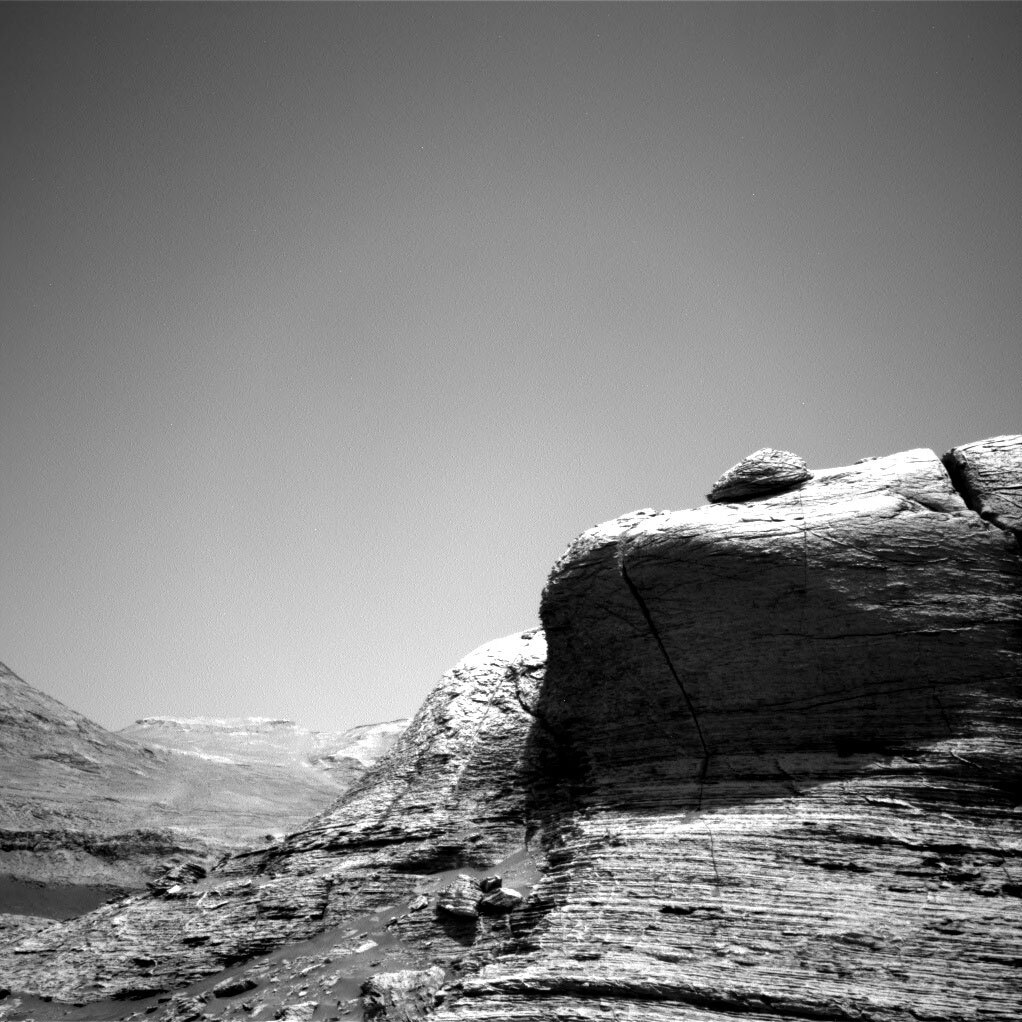2 min read

Humans minds don’t easily comprehend the vast eons of time that separate us from the places we explore in space with robots like Curiosity. Our minds are designed to think in terms of hours, days, seasons, and years, extending up to a duration of our lifetime and perhaps those a few generations before us. When we explore Mars, we’re roving over rocks that formed billions of years ago and many of which have been exposed on the surface for at least tens or hundreds of millions of years. It’s a gap of time that we can understand numerically, but there’s no way to have an innate feel for the incredible ancientness of the planet and Gale Crater.
Today, Curiosity is continuing our drill campaign at Nontron and preparing SAM to study the sample later this week. While that’s ongoing, Mastcam will take a sure-to-be-spectacular 360° mosaic and ChemCam will study the Mont Mercou cliff in front of us (as seen in this Navcam image), including a target called “Font de Gaume.” Font de Gaume cave in France is home to stunning paleolithic cave art of bison, reindeer, and other Ice Age wildlife painted 19-27,000 years ago. Even that length of time, at least 15,000 years before the pyramids were built in Egypt, is barely 0.0005% of the time back to when Gale Crater formed on Mars.
Written by Scott Guzewich, Atmospheric Scientist at NASA's Goddard Space Flight Center







